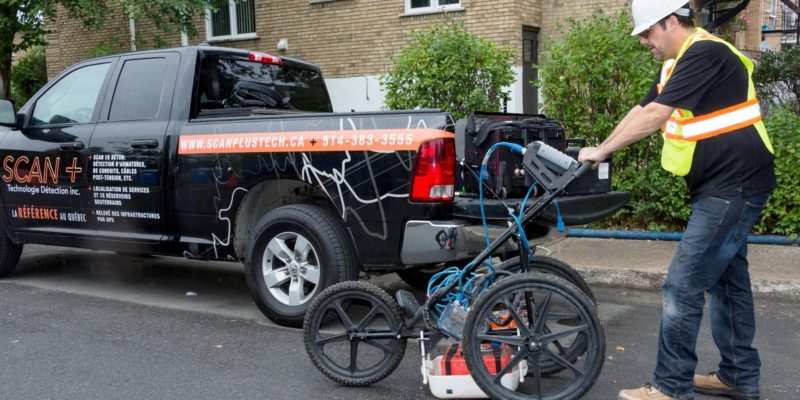Ground Penetrating Radar is a technique used for locating or confirming the presence of utilities buried underground. Some of the utilities detected by this technique include underground water and sewer pipes, optical and electrical cables, shallow unexploded ordnance, and wood among others. As a technology, GPR has helped immensely to save underground utilities that could have been damaged during construction projects. This has led to faster completion of projects, minimal public disruption due to damaged utilities, and proper planning and execution of projects.
It is a relatively new technology, and as such, its adoption is still slow outside civil engineering applications. However, the future is very bright for the technology as awareness about its importance increases, and more and more industries and government departments are adopting it as a tool to aid in their planning. Read below for an overview of what we can expect about GPR in the coming years.
Growth in global demand for radar
There has been an increase in the global demand for ground penetrating radar. This has been occasioned by the growth of the construction industry, especially the rise in real estate projects as well as the development of infrastructures such as roads and bridges. In these industries, GPR has more applications than just conduit detection. It is a vital tool used not just in the planning of projects that are yet to commence, but can also be used to review already existing projects. For instance, the technology is vital in reviewing the structural strength of buildings and in identifying cracks and voids that might compromise the building’s structural integrity.
The cart-based GPR to dominate the global market
There are two main variations of ground penetrating radars in the market today. The first one is the hand-held version which is more portable, but may be tiring because you have to have it in your hands at all times. The second variation is the cart-based one. There has been a sharp increase in the demand for the cart-based GPR and this is expected to continue in the coming years.
This is because of its versatility when it comes to applications such as mapping underground infrastructure, carrying out geophysical surveys, and detecting mines and unexploded ordnance. The market for the hand-held GPR is also expected to grow, but not in the same magnitude as the cart-based GPR market. The hand-held GPR is mainly ideal for the construction industry where it is used for concrete scanning with GPR, locating post-tension cables, rebar, and voids as well as for determining the thickness of concrete slabs in real-time.
Increased utilization in transport and road inspection
It is anticipated that the coming years will see an increase in the adoption of GPR in transport and road inspection. Additionally, based on global application, the technology has found a lot of relevance in disaster inspection as well as municipal and environmental protection. In terms of application, it is expected that the transport industry will lead the pack since technology has tremendous use when it comes to inspecting roads and bridges for potential structural defects. Additionally, this industry will also see an increased reliance on this technology for early, and accurate detection of damages in pavements and on bridge decks.
North America will command the lion’s share of the global GPR market
North America is known for its quick adoption of technology. When it comes to the use of GPR, only Singapore and Malaysia could have challenged them, but according to the recent statistics, they are poised to command the largest share in the GPR global market. North America’s dominance can be attributed to the increase in demand as a result of the robust construction industry, as well as increased adoption by the military for their overseas missions. The other notable markets for GPR include Asia Pacific, Europe, Africa, the Middle East, and Latin America. Asia-Pacific is currently viewed as the fastest-growing market for GPR technology. This is primarily because of the rapid urbanization currently being witnessed in the region.
Increase in awareness of the importance of GPR
The global increase in demand is a result of an increase in awareness of the importance of GPR. It is becoming clear to the masses, private entities, and concerned government departments that the technology is not only restricted to the construction industry – it is not just for concrete scanning in Montreal and Ottawa alone.
There is already an increase in the adoption of the technology in the mining industry as it is emerging as an essential tool for planning excursions and explosions in the mines. There is also increased adoption of GPR drone integrated systems. These systems are designed to view or inspect underground utilities more efficiently. All these will be a major driving force not just for the adoption of the technology, but also increase in the awareness of its importance.
More partnerships and acquisitions to make the technology better
There are several companies in developing GPR markets worldwide. As with major business ventures, partnerships and acquisitions may sometimes be necessary to improve market penetration and also to improve the quality of the product. This is the same thing that is currently being witnessed among the major players in the GPR market.
Increase in adoption by law enforcement
GPR is a robust technology that can do more than just detect utilities underground. It can also be used to detect the presence of buried human remains, mines, and even guns. This has made it a great addition to the law enforcers’ toolbox, especially investigative agencies dealing with missing persons or weapons. To the military, it is one of the tools that can be used to detect mines planted on the roads that usually end up killing and maiming innocent soldiers and civilians.

